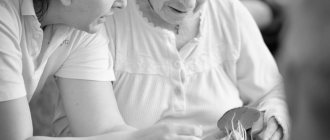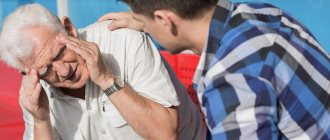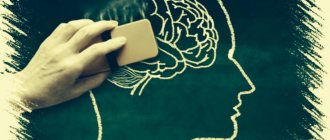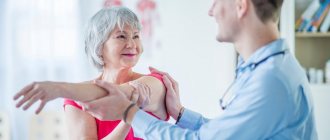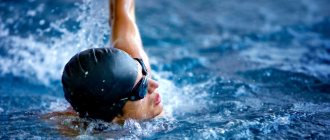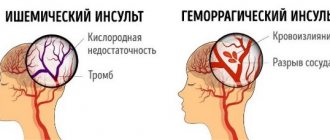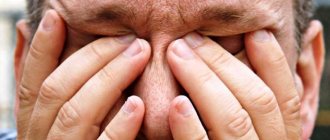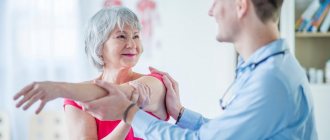Stroke is a serious disease caused by a violation of cerebral circulation. Often after a stroke, paralysis occurs on the right or left side of the body, depending on whether the right or left hemisphere of the brain is damaged. After a stroke, the patient needs rehabilitation - rehabilitation exercises, massage, help from a psychologist, and support from relatives.
How to restore an arm after a stroke
A positive attitude and support from family have an impact on rapid recovery from illness. Partial paralysis of the arm is a common occurrence after a stroke and is characterized by stiffness of movement and limited motor ability of the arm. Functional paresis (partial paralysis) refers to neurological syndromes, caused by disruption of the nervous system, damage to the nervous system pathway due to damage to the cerebral cortex after a stroke. Paralysis of the arm is the complete absence of voluntary movements of the limb. Such conditions require the help of rehabilitation specialists. The neurology and rehabilitation clinics of the Yusupov Hospital treat patients after stroke. The hospital’s specialists are a team of neurologists, psychotherapists, massage therapists, and therapeutic exercise specialists. Individual sessions with the patient are carried out taking into account the severity of his condition.
Recovery from a stroke may involve the hand or the entire limb. With partial paralysis, the ability to move the arm or hand freely is impaired; the person cannot fully care for himself or perform basic actions. To restore motor ability, the patient must perform daily exercises for finger motor skills and limb motor skills. Specialists at the rehabilitation department of the Yusupov Hospital use special simulators to help restore brain function, sensitivity and motor activity of the limbs. The rehabilitation process after a stroke is not quick and requires patience. Exercises to restore motor activity of the hand will need to be performed at home, after discharge from the hospital.
Prevention of pneumonia
Prolonged bed rest causes stagnation of blood in the lungs. Against the background of this problem, pneumonia occurs. The danger of the phenomenon is its asymptomatic occurrence. Over time, the bedridden patient experiences weakness, cough, shortness of breath or heart failure, and fever. Pneumonia can occur at an early stage of a stroke (2nd - 3rd day of the disease) or a late stage (2nd - 6th week of the disease). To prevent the occurrence of pneumonia you must:
- perform a drainage massage - lightly tap the back at the level of the lungs (do not touch the spine);
- ventilate, moisten the room - dry air dries out the nasal mucosa, which becomes a breeding ground for infection;
- do passive gymnastics - several times a day the patient should be raised in bed, raise and lower the upper limbs, thus improving breathing;
- perform breathing exercises;
- give expectorants (as prescribed by a doctor).
Restoring an arm after a stroke at home
For complete rehabilitation, the patient’s psychological mood is important. A psychotherapist at the rehabilitation center of the Yusupov Hospital will help restore psychological balance. Restoring sensitivity and motor activity begins with the prevention of muscle spasticity. The arm muscles shorten after a stroke and lose their elasticity due to prolonged inactivity. Classes begin with passive gymnastics for the joints of the limb, which should be performed in a position comfortable for the patient. When the patient can make the first movements with his hand, the joints will already be ready for motor load. Restoring an arm after a stroke at home will be faster if the patient is helped by loved ones.
Classes begin with the formation of a message from the brain to the limbs - the patient must mentally imagine the movement of the limb. Regardless of whether one or both limbs are damaged after a stroke, the exercise should be performed with both limbs. Such exercises activate areas of the brain responsible for the functioning of pathways. Mentally imagining hand movements is an exercise that can be performed throughout the day, an unlimited number of times.
Performing gymnastics with the help of various objects - a ball, a rolling pin, small objects that improve the motor skills of the fingers, allows you to speed up the recovery of brain function. Exercise with a stick - bending, extending the arms, allows you to regain lost skills. When performing gymnastics, in most cases, the help of loved ones is required - they can give commands to perform movements, help perform movements for the first time, bend and straighten a limb, and give massage. Gymnastics often causes pain and irritation in the patient. Despite the pain, the load should gradually increase, the exercises should become varied. Over time, the patient must perform gymnastics without assistance, fully bearing the entire load when moving.
The given exercises are aimed at restoring fine motor skills of the hands. Restoring hand mobility is one of the most difficult parts of rehabilitation, so it is important to be persistent and try all the exercises until you find what works for you.
Stretching exercises
Stretching exercises are performed actively or passively, depending on the degree of loss of hand mobility. If the mobility of a limb is completely lost, you can perform exercises by helping yourself with your healthy arm. Exercise helps prevent muscle spasms and restore hand mobility.
Hand exercise
Place your hand on the table, allowing your palm to hang freely from its surface. Start moving your palm up and down while bending your wrist.
Thumb exercise
The starting position is a fully open palm. Move your thumb toward your little finger as if you were showing the number 4. Continue moving your thumb between these two positions.
6 easy arm exercises
If your hand mobility is partially preserved, practice the exercises below. To complete this you will need a few simple items.
- Stacking coins
- Squeezing clothespins
- Board games (chess and checkers)
- Putting together a puzzle
- Playing the piano
- Playing a virtual piano (electronic simulator)
2 exercises for rotating and moving objects
Having mastered a set of coordination exercises, proceed to rotation and shift exercises.
Take a pen and try to rotate it around your middle finger using your index and ring fingers. Be sure to think about how the handle rotates in your hand.
Then hold the pen the way you normally hold it when writing (thumb, index and middle fingers). Push it forward with pushes until only the tip remains in your hand. Turn the handle over and repeat the exercise from the beginning. As you practice, think about how your fingers move along the handle.
Hand Exercises: Increasing Difficulty
To complete this exercise you will need 10 identical small objects like pea seeds. The goal of the exercise is to collect all the grains from the table with your fingers. As you select each next one, try to hold the already collected peas in your hand.
Thus, with your index finger and thumb you practice a pinch grip, and with the rest you learn to hold objects.
When all the beans are in your hand, place them back on the table one by one. Use your thumb to move the grain from your palm into the grip between your thumb and forefinger, and then place the grain on the table.
This exercise requires good coordination. If you can't do it the first time, remember that it is a difficult task that requires serious practice.
8 therapeutic ball exercises
The ball is one of the simplest and most accessible tools for restoring hand mobility.
Use soft balls to train strength and hard balls to restore coordination. Try using balls of different sizes and hardnesses to make your workout more effective.
- Power grip. Squeeze the ball with all your fingers. Try to squeeze with your pads and fingertips.
- Pinch grip. Squeeze the ball between your thumb and fingers. Squeeze it rhythmically on both sides.
- Thumb training. Roll the ball up and down in your palm, bending and extending your thumb.
- Rolling the ball on the table. Roll the ball over the surface, rolling it with your entire palm - from your wrist to your fingertips.
- Palm squeezing. Hold the ball in your palm and squeeze it with your fingers. This exercise differs from the power grip in that you must focus specifically on squeezing your fingers inward. Imagine that you are trying to press your fingers straight into your palm.
- Thumb rotation. Using your thumb in a circular motion, rotate the ball in your palm.
- Squeezing with fingers. Squeeze the ball with any two fingers of one hand. Alternate your fingers.
- Rolling the ball. Roll the ball from side to side using your thumb.
8 exercises with therapeutic clay
Therapeutic plasticine is another tool for restoring hand coordination and motor skills.
- Exercise "scissors". Squeeze a lump of plasticine between your fingers.
- Pinch grip. Squeeze a lump of plasticine with your thumb, index and middle fingers.
- Power grip. Press all your fingers into the lump of plasticine.
- Flat clamp. Squeeze the lump of plasticine with outstretched fingers.
- Two finger stretch. Wrap a strip of plasticine around two fingers and stretch it in different directions.
- Finger development. Wrap a strip of plasticine around your bent finger. And then straighten your finger, overcoming the resistance of the ring.
- Stretch with all fingers. Wrap a strip of plasticine around your fingers and then stretch it with all your fingers at the same time.
- Full power grip. Crumple a lump of plasticine by pressing it into your palm with your fingers.
Rehabilitation at the Yusupov Hospital
At the rehabilitation clinic of the Yusupov Hospital, the patient will be provided with all the necessary assistance. The hospital's psychologists work not only with patients - they also provide assistance to the patient's family members. The rehabilitation process of restoring motor activity of the limbs requires patience from the patient and a lot of work - this will allow you to return to a full life after a stroke. You can make an appointment with a neurologist by phone. The rehabilitation doctor will develop individual exercises for the patient, the patient will be under constant medical supervision and receive qualified assistance from specialists.
Preventing the formation of bedsores
Bedsores are formed under the influence of a number of factors:
- body overheating;
- unsuitable underwear and bed linen - injure the skin;
- illiterate care can provoke the appearance of long-term non-healing wounds;
- untimely treatment of abrasions, cuts, and other damage to the epidermis.
A bedsore is a source of infection entering the blood, which causes complications in the course of the disease. Bedsores appear in places where the skin is in constant contact with a hard surface. This is easy to avoid - you need to periodically change the position of your body. Do all manipulations of turning over and changing body position slowly and carefully. The client must be left in the selected position for 2 – 3 hours. Make sure that no folds form under the body and that the laundry does not bunch up.
Air baths are a good prevention of skin necrosis. Light massage of areas prone to bedsores (shoulder blades, hips, sacral area, heels, other areas) helps avoid damage to the epidermis. Before massage, it is best to lubricate the skin with camphor oil. The massage is done until the surface of the epidermis becomes slightly red, which indicates restoration of blood circulation.
